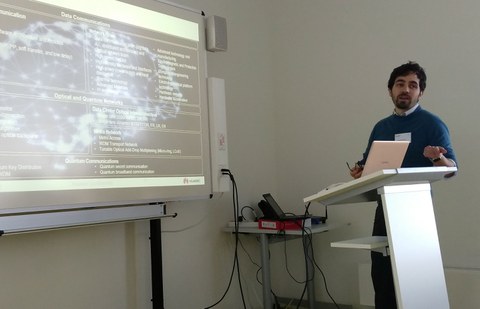Dec 06, 2018
Huawei plans cooperation with TU Dresden

Dr. Andrea Sanfilippo (Technology Planning and Cooperation Manager) presents the main research fields of Huwei
On October 30, 2018, the Transfer Office invited professors and scientific staff from TU Dresden to a cooperation meeting with a team from the Chinese telecommunications provider Huawei and its subsidiary and semiconductor manufacturer HiSilicon to discuss the possibilities of future joint projects. At the all-day event, the Huawei delegation presented its fields of activity and company interests as well as future projects. Huawei and TU Dresden plan to carry out joint research projects on new technologies in the field of telecommunications in the future.
Numerous professors from the various engineering science faculties at the TU Dresden, including Prof. Dr. Christof Fetzer, Prof. Dr. Steffen Großmann and Prof. Dr.-Ing. Thomas Mikolajick, presented their fields of research in short presentations and then discussed the questions posed by Huawei employees, from which new ideas for joint cooperations developed. Huaweis' self-imposed goal of continuously improving its products and being able to offer its customers new and innovative products every year is a great challenge and at the same time offers the opportunity to research and develop new materials and technologies together with scientists, according to Torsten Wipiejewski, Business Developer at Huawei. At the end of the event, the Transfer Office offered the guests the opportunity to participate in a guided tour through NaMLab gmbH under the direction of Prof. Thomas Mikolajick and thus get to know the laboratories of the research facility.
The research and development work of the global telecommunications supplier shows many intersections with the research fields of the TU Dresden, so that further discussions are planned. The Transfer Office coordinates further cooperations and communication and enables scientists and companies to establish strategic cooperations and to jointly develop and exploit research and development results.
